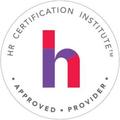|
|
|
Onboarding: Moments That Matter
|
|
|
|
Participants shared notable moments that have shaped their initial impressions of workplaces. By incorporating positive moments and addressing negative ones, organizations can enhance the onboarding experience for new hires.
|
|
|
|
- A warm welcome from leadership, including personal greetings and recognition. (e.g., VP welcoming new hires in the lobby)
- Personalized attention from leaders, offering ongoing support and mentorship.
- Personalizing remote onboarding. (e.g., virtual lunches with leaders with food delivery, virtual coffee chats)
- Meaningful mentorship programs, providing guidance and support for new hires. (e.g., buddy systems)
|
|
|
|
- Feeling lost and unwelcomed due to lack of personal guidance. (e.g., being directed to office without introduction)
- Cold reception without personalized interactions can lead to feelings of isolation.
- Virtual onboarding challenges, hindering connection-building efforts.
- Attention to detail in administrative tasks, like name accuracy, may be lacking. (e.g., misspelled names in HR systems)
|
|
|
|
Leader's Role in Optimizing Onboarding
|
|
|
|
In many organizations, the degree of leader involvement in onboarding processes varies widely. Some leaders take a hands-on approach, actively engaging in the process, while others may have minimal involvement. Although there are varying perspectives, below are insights for how leader engagement looks at other organizations.
|
|
|
|
🧭 Clarify Early Priorities
Leaders can help clarify early priorities for new hires and outline early wins, ensuring they understand their role and contribute to goals from the start.
|
|
|
|
🗣️Open Communication Channels
One organization holds "Ask Me Anything" sessions during remote onboarding, promoting transparency and accessibility for new employees in the virtual setting.
|
|
|
|
⚖️Balancing Logistics & Culture Building
Beyond onboarding logistics, focus on communicating company values, expectations, and purpose. For instance, leaders can incorporate storytelling and team-building exercises to immerse new hires in the organization's culture and foster a sense of community.
|
|
|
|
📌 Vision and Purpose Alignment
New hires must understand the company's vision and purpose during onboarding. Leaders can use town hall meetings to align new hires with the broader and future direction of the company.
|
|
|
Microsoft's Framework: Model, Coach, Care
|
|
Charva Brown, Learning Programs Lead, Management Excellence at Microsoft and Exchange Member Lead, shared Microsoft's onboarding framework inspired by Carol Dweck's growth mindset research.
This framework emphasizes the critical role of leaders in fostering growth mindset, coaching for deeper understanding, and demonstrating care and support for employee success and well-being.
|
|
|
|

Modeling Growth Mindset:
It is important that leaders exemplify a growth mindset, emphasizing continuous learning, resilience in the face of challenges, and the ability to glean lessons from failures. By modeling this mindset, leaders inspire employees to embrace innovation, express their ideas without fear, and actively contribute to the company's success.
Coaching for Understanding:
Delve beyond surface-level inquiries and encouraging curiosity to uncover the root causes of challenges or barriers. By asking probing questions and fostering dialogue, managers empower employees to explore possibilities, overcome obstacles, and achieve personal and professional growth.
|
|
|
Strategic Network Approach to Effective Onboarding
|
|
|
|
Carrie Bevis, Managing Director of Community and Partnerships at i4cp, highlighted research from Connected Talent and the importance of intentionally building relationships and networks as part of a talent transition.
|
|
|
|
|
|
ROI Transitions Calculator
The transition calculator illustrates the full impact of improving transition success rates. You can tailor the calculator to your organization to build a business case for investing in onboaridng and reducing attrition and accelerating time to productivity.
|
|
|
|
|
|
Replicate Fast Movers
The "fast movers" applied three overarching principles over the first 9-12 months:
- Initiate: pursue a broad network; build network address knowledge gaps; connect with influencers; tap trusted advisors.
- Engage: align expertise to context; cultivate network via accomplishment; pursue mutual wins; prioritize trust.
- Refine: avoid network traps; streamline collaboration; sculpt role through intentional network; build enterprise connectivity.
|
|
|
|
|
|
Type of Transition Drives the Strategy
Their are four types of talent transitions to consider: new hire, new senior leader, promoted leader, and the lateral role shift. Each requires these 12 practices, but in a different order depending on their context.
|
|
|
Go Deeper with Further Resources
|
|
|
|






